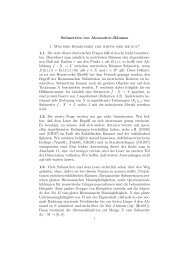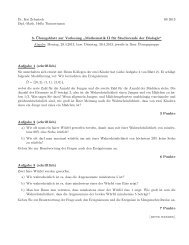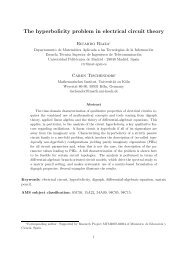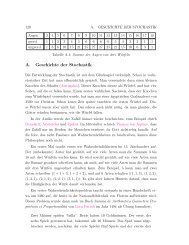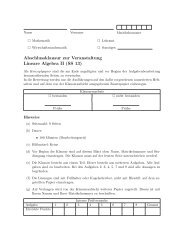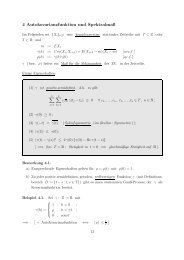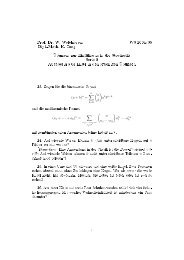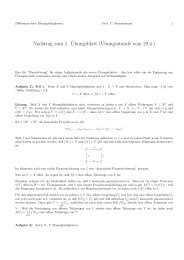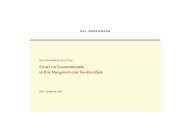Inhaltsverzeichnis - Mathematisches Institut der Universität zu Köln
Inhaltsverzeichnis - Mathematisches Institut der Universität zu Köln
Inhaltsverzeichnis - Mathematisches Institut der Universität zu Köln
Create successful ePaper yourself
Turn your PDF publications into a flip-book with our unique Google optimized e-Paper software.
DMV Tagung 2011 - <strong>Köln</strong>, 19. - 22. September<br />
Jörn Behrens<br />
<strong>Universität</strong> Hamburg, KlimaCampus<br />
A Practical Application of Uncertainty Propagation for Tsunami Early Warning<br />
The challenge of near-field tsunami early warning is to assess the situation precisely within a few minutes,<br />
limited by few and uncertain measurements of key indicators. In other words, in a short timeframe only<br />
limited information is available, but this information has to be interpreted in such a way, that false warnings<br />
are minimized. This challenge had not been addressed in existing tsunami early warning systems<br />
until recently and still leads to a large number of false positive (to be on the save side) tsunami warning<br />
messages world wide. In the course of development of the German Indonesian Tsunami Early Warning<br />
System (GITEWS), operational since 2008 in Jakarta, Indonesia, a new method to assess the situation<br />
has been developed [Behrens et al., 2010]. This method utilizes a simple, yet effective uncertainty propagation<br />
model, which leads to more robust and accurate situation assessments un<strong>der</strong> the large uncertainty<br />
of the first few minutes after an earthquake event. The system is designed as an analog forecasting system,<br />
based on pre-computed scenarios. This allows for a forecast within seconds after measurements<br />
are available. In this presentation the basic design of the system is introduced. Examples for the high<br />
sensitivity and uncertainty of the forecasting problem are given and an analysis with a simple uncertainty<br />
propagation model is given. Based on the analysis, a new method that decreases uncertainties in a robust<br />
way, is <strong>der</strong>ived. Finally, examples of successful application of the new method are given.<br />
Literatur<br />
Behrens, J., A. Androsov, A. Y. Babeyko, S. Harig, F. Klaschka, L. Mentrup. (2010). A new multi-sensor<br />
approach to simulation assisted tsunami early warning. Nat. Hazards Earth Syst. Sci., 10, 1085 - 1100.<br />
Katrin Bentel, Gabriel Goebel, Michael Schmidt, Christian Gerlach<br />
Norwegian University of Life Sciences, Deutsches Geodätisches Forschungsinstitut (DGFI), Bavarian<br />
Academy of Sciences and Humanities<br />
Point grid positions for radial base functions and their effect in regional gravity field<br />
representations<br />
Global gravity fields are most common represented in spherical harmonic base functions. However, the<br />
main drawback of this representation is that regional signals are not necessarily represented in an optimal<br />
way. Spherical harmonics have global support, thus, the gravity models are globally optimized best-fit<br />
solutions. That means, it is difficult to represent small spatial details, they can even be masked in the<br />
solutions.<br />
To represent a gravity signal in a specified region on a sphere appropriately, we use localizing radial base<br />
functions for regional gravity field modeling. The distribution of these individual base functions follows<br />
a predefined point grid. The type of grid, number of points, area boundaries, point density, and other<br />
parameters play a very important role in the representation of a signal. Depending on the type of grid and<br />
its characteristics, artificial structures occur in the estimation of gravity field parameters. In this study we<br />
present some of these typical structures and investigate in detail various effects of different point grid<br />
parameters in the representation of a regional gravity field.<br />
153




